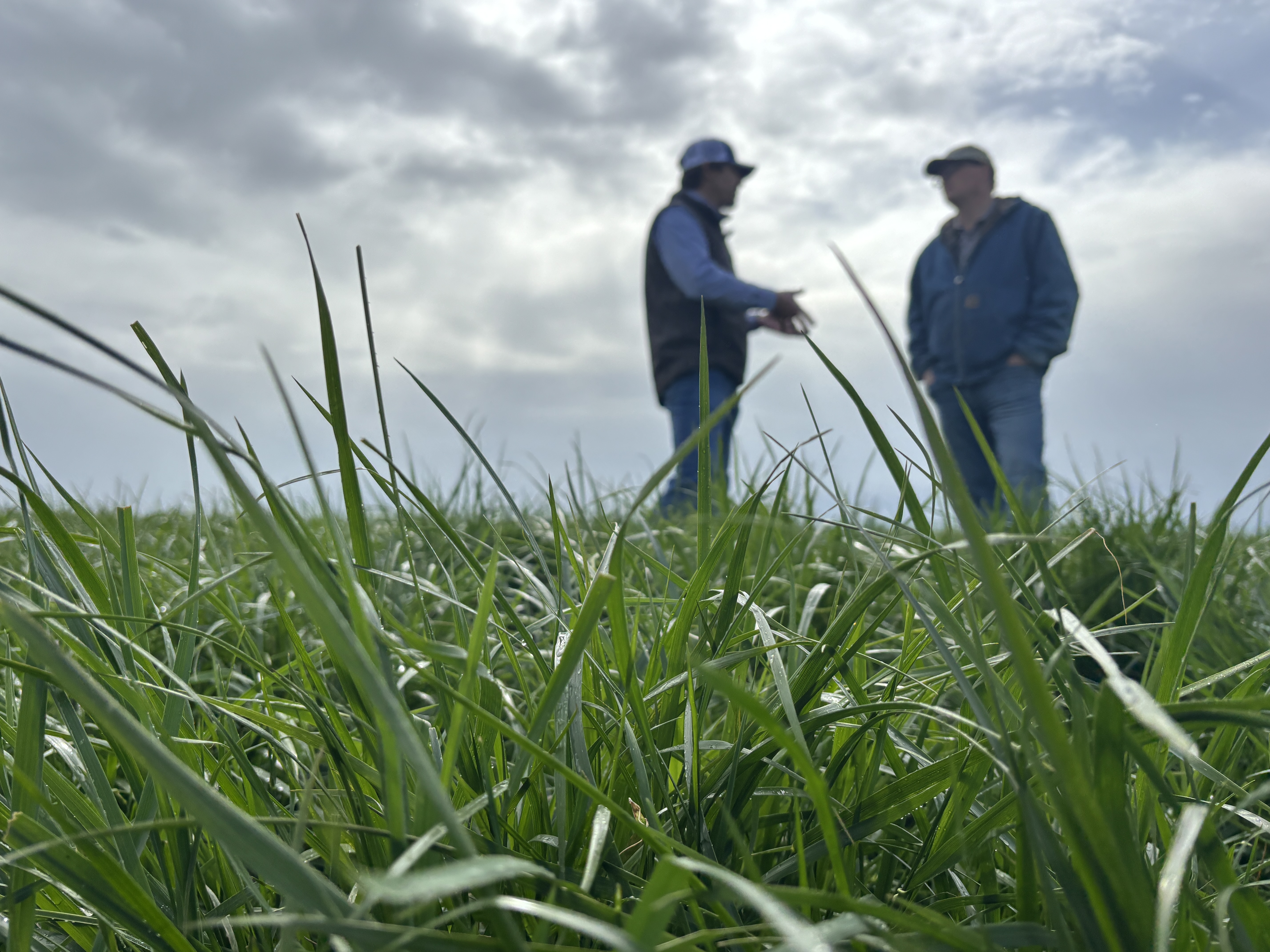Country Selector
Please enter a valid location
Make Pasture Planning a
Priority This Fall

With the bustle of harvest and most pasture weed control measures completed for the year, fall may seem like a fine time to ease up on pasture management. But for Andrew McCrea, that’s far from the case.
“We like to use the fall season to evaluate our pastures, and start making plans for the next year,” says McCrea, who keeps stocker cattle on pasture year-round. McCrea supplements the steers’ diets with distillers grains and silage in the winter, but he doesn’t like to feed hay.
“Pasture should be our lowest cost feed source each year, and a little proactive planning in the fall can go a long way next spring,” he says.
Growing more grass is good weed control, according to McCrea. And in the fall, it’s especially important to not overgraze pastures to get a leg up on winter feeding and give grass a head start against weeds.
“It takes longer for that grass to come up and grow,” he says. “We have pastures that we intentionally do not graze hard in the winter because we know it’s a critical place to have good spring grass to start incoming cattle.”
McCrea considers the following questions each fall and jots down notes to help him plan for next year:
- Which pastures were treated this year?
- Which pastures should be treated next year?
- Were there any new or unexpected weeds?
- What was the weather like and how did that impact the forage quality this year?
- Is there anything that went really well this year, or any areas for improvement?
“It’s easier to have a plan going into next year and make adjustments, than to wait until spring and then try to decide what to do,” McCrea says. “We try to take a step each year to make our pasture management program just a little better than the year before.”
The McCreas have relied on Range & Pasture products from Corteva Agriscience and its legacy companies for more than 30 years. The portfolio of products available to manage pastures has grown significantly in that time, which has provided McCrea more options to further boost forage production.
“When we first started out, we would use one product to treat all of our acres, and that worked well for us,” he says. “But now the portfolio has expanded, and there’s more opportunity to match the products to the pastures for even better results.”
NovaGraz™ herbicide is the most recent addition to the portfolio and is a great example of just that. This groundbreaking weed control solution enables cattle producers to preserve white clover and annual lespedeza while providing enhanced broadleaf weed control.
“We have some pastures where we have a good amount of annual lespedeza, and now we finally have a product that helps promote the growth of that valuable forage,” McCrea says. “We can treat those pastures with NovaGraz and not worry about suppressing annual lespedeza.”
In addition to NovaGraz, McCrea is trying something new with Chaparral™ herbicide, too. He’s used this herbicide in the past for brush and woody weed control, but this year, he’s using the pasture solution to suppress seed heads.
“Cattle don't like to graze fescue with a lot of seed heads,” McCrea says. “They tend to graze areas that are closest to their feed sources. We feed cattle some kind of supplement nearly every day at a bunk so if we can make areas further away from the bunks a little more attractive for them to graze, that helps even out the grazing.”
Contact your local Corteva Range & Pasture specialist or visit RangeAndPasture.com to learn more about NovaGraz, Chaparral and other leading pasture management solutions.
White clover and annual lespedeza exhibit some initial injury (such as lodging and loss of vigor) with NovaGraz but recover. Chaparral™ has no grazing or haying restrictions for any class of livestock, including lactating dairy cows, horses (including lactating mares) and meat animals prior to slaughter. Label precautions apply to forage treated with Chaparral and to manure and urine from animals that have consumed treated forage. Consult the label for full details. Chaparral™ and NovaGraz™ are not registered for sale or use in all states. Contact your state pesticide regulatory agency to determine if a product is registered for sale or use in your state. Always read and follow label directions.

